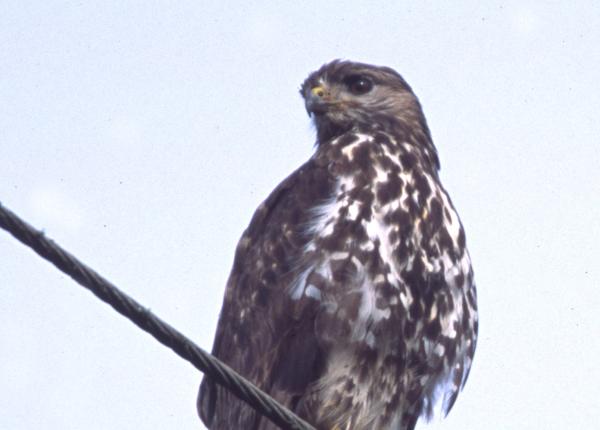Did You Know?
- This species has also been known as African Buzzard, African Mountain Buzzard, and Woodland Buzzard.
- A Mountain Buzzard was observed feeding on eggs from a pigeon's nest.
How The Peregrine Fund is Helping
Though The Peregrine Fund doesn't work directly with Mountain Buzzard, we do support students who are studying this beautiful bird of prey. Additionally, our efforts in scientific research, habitat conservation, education, and community development help conserve raptors around the world. We also supply literature to researchers from our avian research library, which helps scientists the world over gather and share important information on raptor conservation. We also run the Global Raptor Impact Network which gives raptor researchers tools to more efficiently conduct their own studies while contributing to a global program. GRIN also provides citizen scientists a way to participate in raptor science and conservation.
Where They Live
Found throughout parts of East Africa, this species prefers hilly and montane forests, including exotic plantations. It normally is found between 2,000–3,800 m, though sometimes it can be seen in habitats around 4,500 m.
Why They Need our Help
The Mountain Buzzard is categorized as Near Threatened. Habitat loss and degradation are a big threat to this species. Scientists estimate that there are anywhere between 670 and 6,700 individuals left worldwide. Sadly, their population appears to be on the decline.
What They Eat
Biologists still don't know very much about the feeding habits and diet of the Mountain Buzzard. However, we do know that it will take small mammals, reptiles, and insects. It hunts prey by gliding down from a perch, though it sometimes hunts over grasslands near forested areas .in Uganda, naturalists have observed Mountain Buzzard hunting bats as they leave their caves.
Nests, Eggs, and Young
Very little is known about the breeding biology and behavior of this species. We know it builds a stick nest placed in the upper fork of a large forest tree. We also know that, at the start of breeding season, the male and female will engage in courtship display flights.
When the time is right, the female will lay around 2 eggs. The female is responsible for incubating her eggs. When the nestlings hatch, they are covered in gray-white down. They will grow quickly and fledge from the nest when they are less than 2 months old. After they leave the nest, they will remain with their parents for over 100 days as they learn to hunt, avoid danger, and otherwise survive on their own.
Mountain Buzzard and the World Center for Birds of Prey
The World Center for Birds of Prey offers fun ways to learn about birds of prey. Interactive activities, tours, interesting videos and a children's room with activities from coloring sheets to quizzes to costumes are all available for our guests. We also have knowledgeable, on-site staff to answer any questions you may have about Mountain Buzzards or any other bird of prey.
References:
Global Raptor Information Network. 2022. Species account: Mountain Buzzard Buteo oreophilus. Downloaded from http://www.globalraptors.org on 23 Nov. 2022
Kemp, A. C., P. F. D. Boesman, and J. S. Marks (2021). Mountain Buzzard (Buteo oreophilus), version 1.1. In Birds of the World (P. G. Rodewald, Editor). Cornell Lab of Ornithology, Ithaca, NY, USA. https://doi.org/10.2173/bow.moubuz2.01.1










